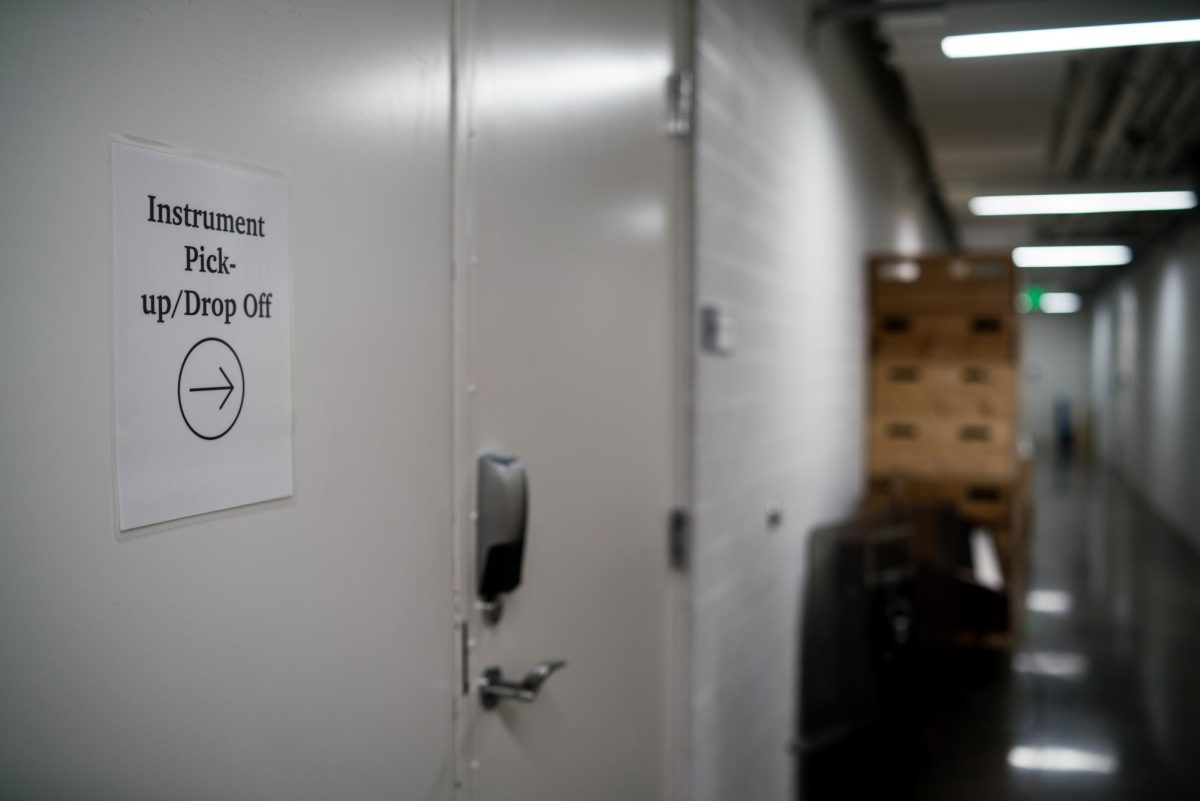The Oberlin Conservatory boasts numerous resources, from the vast music library to the wide range of stages. Historically, these resources have been most accessible to students in the Conservatory. However, recent efforts aim to merge the College and Conservatory to create unified campus. For example, Oberlin introduced a Musical Studies major and minor for College students based on the One Oberlin report from the Academic and Administrative Program Review. The AAPR recognized that music is an integral part of the campus, regardless of one’s educational path. One unifying activity continues to attract Conservatory and College students alike: secondary lessons. The ability to choose any instrument or pick up an old one and begin taking lessons is universally fulfilling.
Almost every Oberlin student practices a form of music-making in some capacity. Whether it’s a student band performing an impromptu porch set or the Oberlin Orchestra filling Finney Chapel with dense harmonies, music takes the centerpiece of every celebration on campus. No Oberlin house party is complete without a jazz band or an aspiring DJ. This omnipresence of music is precisely the reason many students choose to study at Oberlin, even without plans to pursue music as a career. For College fourth-year Allison Lupatkin, the presence of a conservatory attracted her, but she didn’t realize the opportunities it afforded until arriving on campus.
“Having the Conservatory as a musical force on campus definitely played a role in my decision,” Lupatkin said. “But I don’t think I really saw myself playing music. I just liked the idea of being in a musical space and was pleasantly surprised when the opportunity to play came along.”
Lupatkin enrolled in the Arts & Sciences Orchestra and began taking secondary lessons in cello during her first year.
“It’s a great thing that we have to offer,” Administrative Assistant of Conservatory Audio Services Kaylee Mayer said. “Whether it’s a student in the College who wants to branch off and learn an instrument or a Conservatory student who wants to learn a new instrument. We have options.”
Mayer, who acquired her position in the past year, oversees the instrument depot. Oberlin offers this stockpile of musical instruments to any student enrolled in secondary lessons, completely free of charge. Three years prior, when Lupatkin began her cello lessons, she was only presented with one instrument option. Thanks to Mayer’s efforts over the summer, the instrument depot now displays multiple choices of brass, woodwind, and string instruments. The cello section alone contains a dozen instruments, located in the basement of the Kohl Building.
While some higher level instruments are reserved for specific studios in the Conservatory or winners of concerto competitions, the majority are available based on need. Luka Stefanović, OC ’23, utilized this system for personal use and to furnish his secondary lesson students with cellos and viola da gambas. His viola da gamba students, usually Conservatory musicians, had never played the instrument before. Oberlin provided them with enough quality instruments to share. Some of Stefanović’s students weren’t even string players, but were seeking versatility and a deeper understanding of music theory. Exploring new instruments keeps the learning process exciting and the fresh perspective helps develop a new appreciation for one’s main instrument.
Stefanović also described his experience during cello lessons with College students.
“It was something to delve into that was unlike anything else they were doing in their daily experiences,” Stefanović said. “In the same way that those of us in the Conservatory really appreciate having a College where we can, for a couple hours out of the day, go and do something that stimulates completely different parts of our brain or heart.”
Student teachers like Stefanović provide a degree of comfort to secondary lessons. Musical professors can be intimidating for the uninitiated. Between students, the level of commitment can be as high or low as one wishes. Lanie Cheatham, College fourth-year, is taking her third semester of harp secondary lessons with a student instructor.
“She [the instructor] really understands what it’s like to be a student and have a large course load,” Cheatham said. “So, if there are some weeks I wasn’t able to practice as much, she’s like, ‘Yeah, I totally get that.’”
Another upside of secondary lessons is their role in connecting the Conservatory and College. Cheatham felt the lack of contact between the divisions when she arrived, and her harp lessons began to bridge this gap.
“I never really went to the Conservatory before I started taking lessons,” Cheatham said. “Since I started taking lessons I’ve been getting to know my instructor more and also the other students.”
Not only do secondary lessons familiarize students with Conservatory resources, they help solidify music as a lasting element of their lives. A common thread between students enrolled in secondary lessons were their extracurricular musical activities. Lupatkin formed a duet with her friend while Cheatham performed in a co-op talent show. Other students mentioned joining open ensembles, such as the Musikos Collective or the Creative Music Lab.
Through secondary lessons and the instrument depot, Oberlin offers anyone the opportunity to pursue a musical career, and these musical options are becoming increasingly accessible. These resources can and should be equally available to the greater student population.






